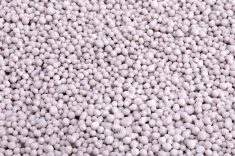Several years ago, there was substantial debate on whether corn ethanol produced more net energy relative to the amount of fossil energy required to manufacture it. This ratio, the amount of energy produced divided by fossil energy input needed, often is referred to as ethanol’s energy balance. For years, scientists argued whether the ratio exceeded one to one.
Two studies released this month, one by Hosein Shapouri of the U. S. Department of Agriculture (USDA) and a second by Stephan Mueller at the University of Illinois in Chicago, confirm that ethanol’s energy balance now far exceeds one to one and is closer to 1.4 to one. Both studies relied on survey data obtained from operating ethanol plants.
Read Also

Biogas pitched to turn farm waste into renewable energy
Anaerobic digestion can convert manure and other agricultural waste into renewable energy as well as fertilizer, but Manitoba farmers don’t have the best history with the technology
The USDA’s study provides insight as to where the energy efficiencies have been realized. Of the total energy required to produce a gallon of ethanol (53,785 British thermal units), most of the energy is consumed in the plant during the conversion process at 40,019 Btu.
The amount of energy required to produce the corn is the second-largest component at 9,811 Btu. Remaining energy claims are for transporting the corn and distribution of the ethanol to retail consumers.
Here is where it gets interesting. While the farm’s share of energy use for ethanol production is substantially lower than the amount of energy used in ethanol plants for manufacturing, it’s the farm level that has led to the overall gain in ethanol’s energy balance. The USDA has monitored energy use in corn production since 1991. During that period, energy use at the farm level has declined almost 30 per cent.
The largest use of energy at the farm level is nitrogen fertilizer, which accounts for almost half of all the energy consumed. Energy for other fertilizers, drying and tractor operations are less than one-fourth of the nitrogen fertilizer energy used.
Several factors are responsible for the steep decline in fertilizer use in corn production. New corn hybrids utilize fertilizer more efficiently, application technology has improved and producers are more aware of an environmental run-off following excessive applications.
However, during the past few years, farmers have reduced fertilizer applications because of record high prices. Therefore, one has to question if the downward trend in fertilizer application, farm energy use and the resulting increase in the ethanol energy balance is a long-term trend or just a temporary situation.
If fertilizer prices moderate in the future, are farmers once again going to be applying more nitrogen fertilizer, which eventually will result in a lower ethanol energy balance?
To the extent that farmers have “mined” soil nutrients for the past couple of years, it may take several years of fertilizer applications to restore prior productivity.
While most scientists now concur that ethanol contains more energy than is required to produce it, the final energy balance statistic still is open for debate.


















